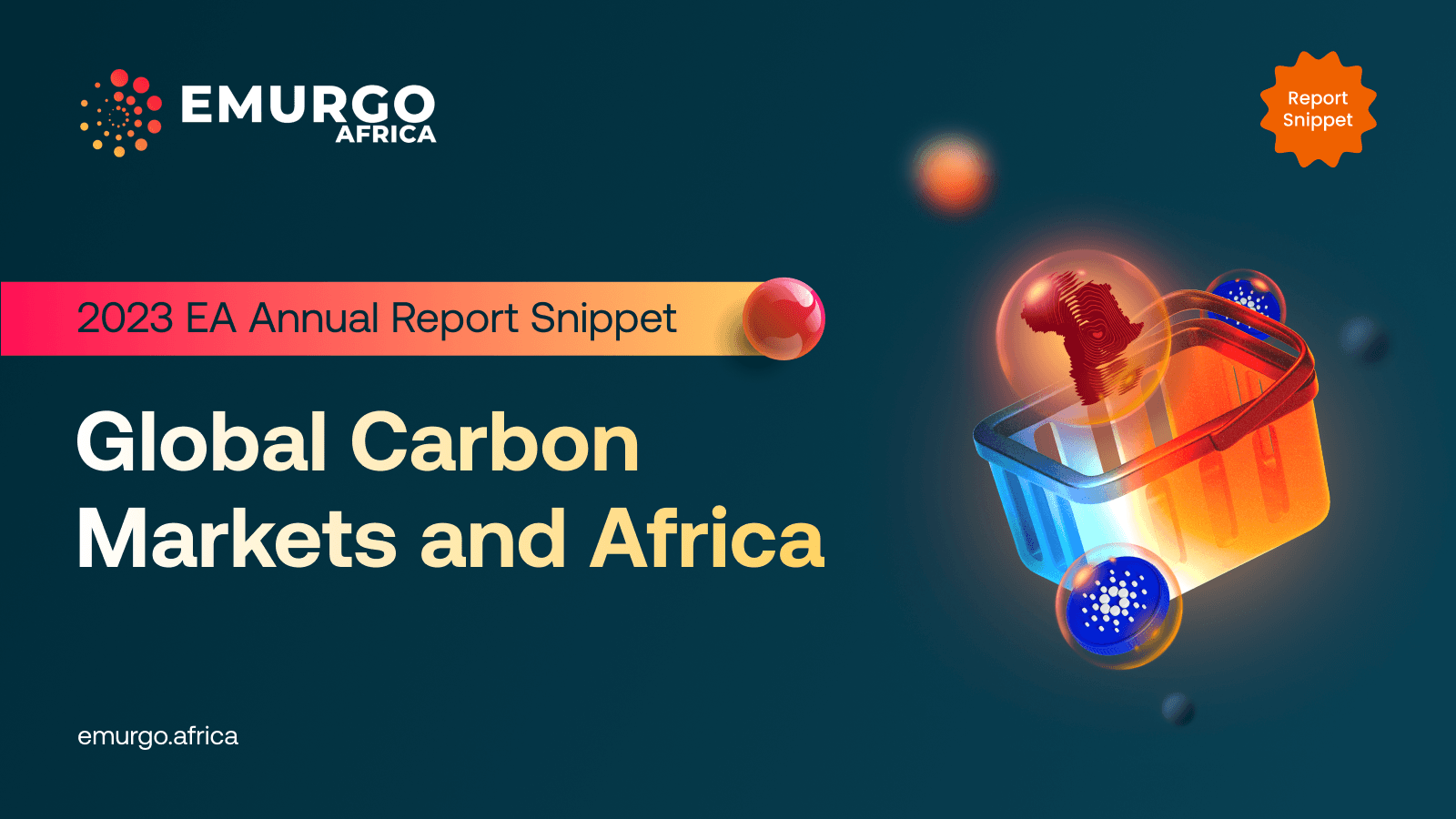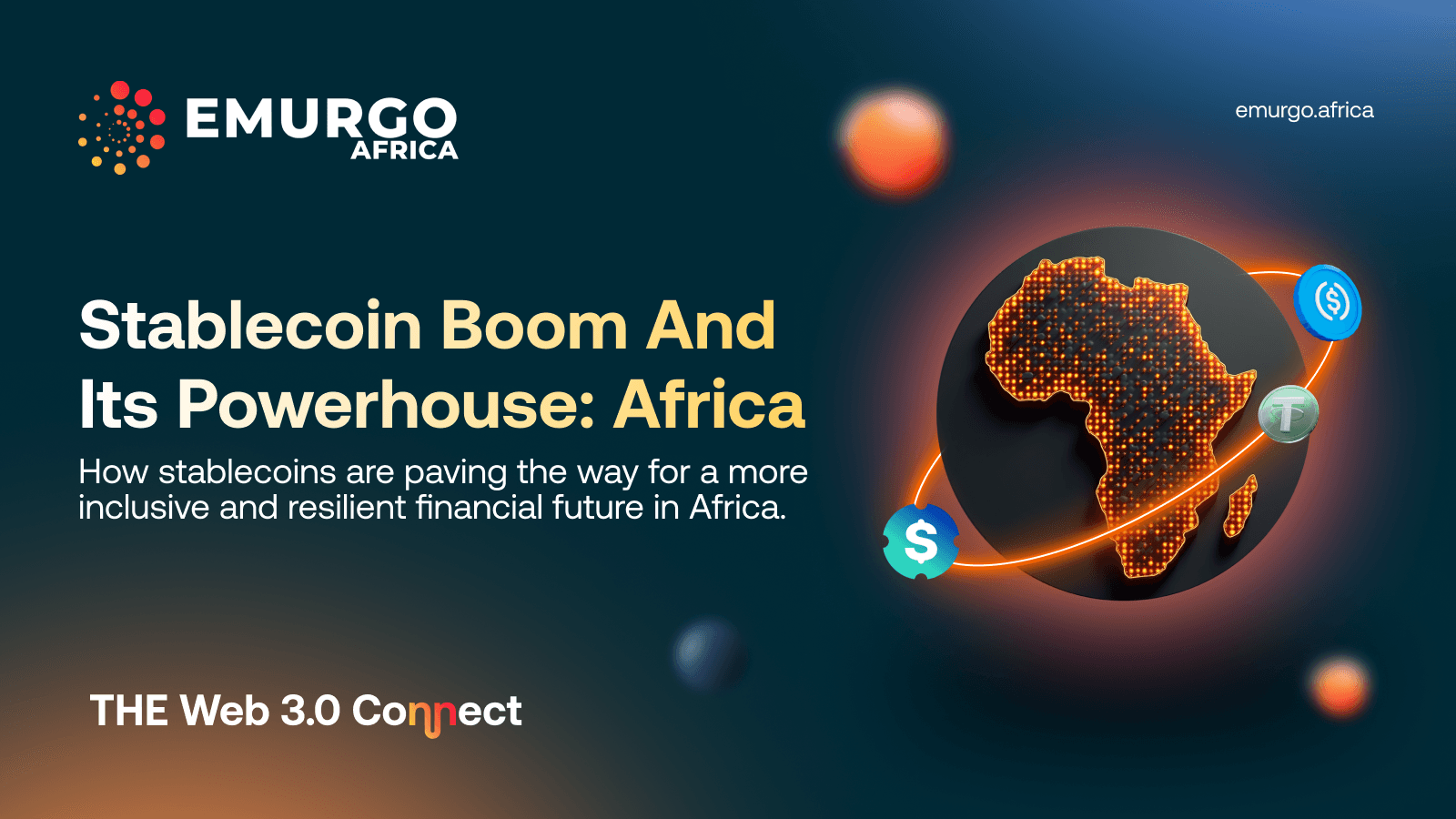Thank you for visiting our blog post 🦥🌟
With the Paris Agreement's goal of reducing global greenhouse gas (GHG) emissions set at COP21 in 2015, countries and organizations can no longer ignore decarbonization in their respective activities. This post provides an overview of the global carbon markets, which are growing in importance and presence over the years, their potential, and the movement in Africa.
Hope you enjoy reading the articles 😌🥦

Photo: Financial growth concept by Canva
Table of Contents:
Fundamentals of Carbon Market
Context of carbon markets
The ultimate goal of the Paris Agreement was to limit global emissions and, more importantly, to impose accountability for countries' actions (and inactions) around reducing carbon emissions1. As a result, the Emissions Trading Scheme (ETS) became an important platform for trading carbon credits issued as part of the cap-and-trade system, which was established within the Kyoto Protocol and allows governments to set total carbon dioxide allowances and allocate these allowances to companies for trading. Participation in the compliance carbon market became mandatory for countries and regions where these cap-and-trade schemes were introduced1. However, participation in the voluntary market remains voluntary1.
Carbon offsets vs. carbon credits
Carbon offsets represent a reduction or removal of GHG emissions. Carbon offset is created when individuals or organizations decide to invest in projects that mitigate climate change, such as afforestation, renewable energy, or carbon capture and storage. Carbon credits are a measure of ‘permitted emissions’, and carbon offsets are considered compensation for ‘removed emissions’.1 Although the terms are often used interchangeably, carbon credits are primarily traded in compliance markets while carbon offsets are often traded in voluntary markets.
Avoidance offsets vs. removal offsets
Avoidance offsets represent a decrease in carbon emissions compared to a baseline scenario such as financing a solar power plant in a region dominated by fossil fuel and limiting timber harvest levels by stopping the conversion of grasslands to croplands2. On the other hand, removal offsets represent a direct decrease in carbon stock in the atmosphere such as tree growth and direct-air-capture, which captures carbon dioxide (CO2) emissions with special filters, heats it, fixes it with water, and injects it underground for a long time3.

Photo: Ngong hill in Nairobi, Kenya taken by author
Global Carbon Market Overview
Today there are around 30 compliance carbon markets and an untold number of voluntary carbon markets (VCM) in the world4. In spite of the hype of VCM, the compliance market is much larger than VCM, accounting for more than USD 850 billion in value, compared with USD 1 to 2 billion for VCM in 20215.
Compliance carbon markets: volume, covered emission, and price
EU Emissions Trading System (EU ETS), launched in 2005, is the world's first major carbon market and remains the biggest one in terms of trade volume6. In 2021, there was a momentum when China launched its national ETS. It became the world's largest in terms of covered emissions7. For now, China ETS applied to just 2000 companies from the power sector and is expected to expand to other sectors in the future7.
Figure 3.1. Share of Global Greenhouse Gas (GHG) Emissions by ETS

Source: Figure cited from The Untapped Power of Carbon Markets in Five Charts by BloombergNEF5
Overall, carbon prices need to rise in the longer term to drive investments into climate neutrality at the scale and pace required. Currently only the EU ETS and UK ETS have prices within or above USD 50-100 per metric ton of carbon dioxide, which is required by 2030 to meet the temperature goals of the Paris Agreement, with other major markets falling well short8.
Figure 3.2. Carbon Price in Selected ETSs (2018-2023)

Source: Figure cited from State and Trends of Carbon Pricing 2023 by World Bank8
Voluntary carbon markets (VCM): demand, supply, and price
Although the current market size of VCM is much smaller than the compliance carbon market, VCM has seen significant growth in recent years. As global decarbonization efforts intensify, demand for these credits is expected to rise. VCM is expected to grow from $2 billion in 2020 to around $250 billion by 205010.
Figure 3.3. Global Demand for Voluntary Carbon Credits

Source: Figure cited from Carbon credits: Scaling voluntary markets by McKinsey9
The supply of carbon credits has been shifting from renewable energy to nature-based activities. Due to significant cost reduction of renewable energy technologies, large-scale renewable energy projects may fail to meet the “financial additionality” requirement that emission reductions of the project should not be viable without the revenues from carbon credits8. As a result, there has been a growing focus on nature-based activities such as forestry, land use, and agriculture activities.
Prompted by Russia’s invasion of Ukraine, exchange-traded credit prices have been falling across categories. Nature-based credits saw a significant drop, from around USD 16 to under USD 5 by the end of 20228. The use of standardized prices is noted as a factor driving down pricesa, which resulted in the rise of over-the-counter (OTC) prices in 20228. While 2022 saw convergence in prices, removal offsets credits are still traded at a clear price premium.
Figure 3.4. Prices of Standardized Carbon Credit (2021-2023)

Source: Figure cited from State and Trends of Carbon Pricing 2023 by World Bank8
Furthermore, activities which are newest and located in the least developed countries tend to present a higher price than similar activities8. The prices of futures products indicate a modest price increase in the next two years, with expectations for rising prices and a potential reemergence of the premium for exchange-traded, nature-based credits8.
Carbon Market Movements in Africa
Africa has huge potential, yet only 2% of its potential is used
Africa has a huge potential to produce carbon credits: Africa's forests absorb 600 million tons of CO2 each year, more than any forest ecosystem on earth12. Demand for African-origin carbon credits has been growing too — at a compound annual rate of 36 percent between 2016 and 202111.
However, out of total credits issued worldwide between 2016 and 2021, only about 11 percent stem from African countries, and the bulk of these come from a few large projects11. It is estimated that Africa currently generates only 2 percent of its maximum annual potential of carbon credits13.
Photo: Tea farm in Embu, Kenya taken by author
In the Middle East and Africa, the South Africa ETS is currently the sole compliance carbon market. Also, South Africa's carbon tax is the sole policy in effect8. However, Botswana, Côte d’Ivoire, Gabon, Morocco, Nigeria, and Senegal, are exploring the adoption of either a carbon tax or an ETS8.
Africa carbon markets initiative (ACMI) aims to dramatically expand voluntary carbon market in Africa
At COP27 in 2022, the African Carbon Markets Initiative (ACMI) was launched by a group of sponsorsb. ACMI aims to significantly expand African participation in voluntary carbon markets: producing 300 million carbon credits annually by 2030 and 1.5 billion credits annually by 2050, unlocking substantial revenue and supporting job creation and distributing revenue equitably and transparently with local communities11.
Countries including Kenya, Malawi, Gabon, Nigeria and Togo committed to scale the voluntary carbon market by developing comprehensive carbon market regulations with ACMI14. Together these countries have a maximum potential to generate over 300 MtCO2e14.
In September 2023 in Kenya, at the continent's first climate summit, UAE Carbon Alliance committed to buying $450 million of carbon credits from ACMI16. Climate Asset Management, a joint venture of HSBC Asset Management and Pollination, also announced a $200 million investment in projects that will produce ACMI credits16.

Photo: COP28 round table discussion in Dubai, UAE taken by EMURGO Africa
At COP28 in 2023, the High-Integrity Carbon Markets Initiative was launched by UNDP17. The initiative aims to support low-income countries’ access to carbon markets, mitigate social and environmental risks, and promote accurate carbon accounting17.
Notes
a. The mechanism of standardized prices’ causing price decline is as follows. By grouping credits that meet certain minimum criteria, exchanges increase market liquidity and facilitate investments, but the specific attributes of the highest quality projects, and consequently their value, can be lost to a “least common denominator” effect8.
b. The group of sponsors include the Global Energy Alliance for People and Planet (GEAPP), Sustainable Energy for All (SEforALL), The Rockefeller Foundation, and UN Economic Commission for Africa, with support from the UN Climate Change High-Level Champions11.
References
1. Carbon Markets - Overview, History, Context, Tax | CFI
2. Avoidance and Removal Offsets are Needed Equally | The Climate Trust
3. Choosing Between Carbon Avoidance and Removal Offsets | Azzera
4. Carbon Markets: What They Are and How They Work | Investopedia
5. The Untapped Power of Carbon Markets in Five Charts | BloombergNEF
6. EU Emissions Trading System (EU ETS) | European Commission
7. China National ETS | ICAP
8. State and Trends of Carbon Pricing 2023 | World Bank
9. Carbon credits: Scaling voluntary markets | McKinsey
10. Where the Carbon Offset Market Is Poised to Surge | Morganstanley
11. Africa Carbon Markets Initiative (ACMI) Roadmap Report | ACMI
12. Africa hopes for starring role if carbon offsets market can overcome credibility crisis | Reuters
13. African initiative aims to bring transparency to carbon markets | Devex
14. Nigeria, others launch new Africa carbon markets initiative at COP 27 | The Guardian
15. ACMI’s Narrative on African Carbon Markets | ACMI
16. Hundreds of millions of dollars pledged for African carbon credits at climate summit | Reuters
17. UN Development Programme launches plan to boost integrity in carbon markets and increase access to finance schemes for developing countries | UNDP
Thank you very much for reading this post 🌴✨
For downloading the full report, visit this page.
Follow EMURGO Africa for more information

EMURGO Africa invests and supports local Web3 projects in the region to adopt Cardano’s decentralized blockchain technology to build socially impactful solutions.
As a regional entity of EMURGO, the official commercial arm of Cardano, EMURGO Africa also runs a local Cardano accelerator in Africa, Adaverse, which accepts applications year-round.
For more up-to-date information on EMURGO Africa, follow the official channels listed below.
About EMURGO Africa
- Official Website: www.emurgo.africa
- X: @EmurgoAfrica
- Telegram: https://t.me/emurgoafrica




